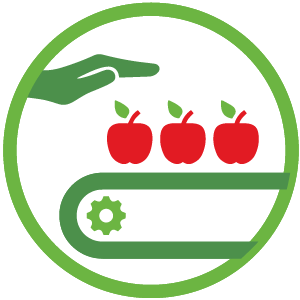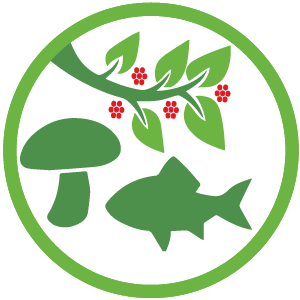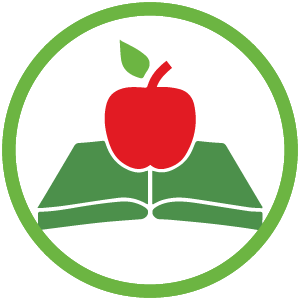About Thunder Bay’s Community Food System Report Card
Introduction
Building Strong Community Food Systems
Food is intimately tied to our health as individuals and plays a major role in the well-being of our communities, economies, and environments.
While food is a critical component of healthy and sustainable communities, decisions relating to food have for decades been driven by commodity markets, global economic trends and fragmented government policy that considers parts instead of the whole. Government food policies and programs tend to be disjointed, take place in silos, and fail to consider the broader role that food plays as a centerpiece of healthy and vibrant cities, regions, and rural landscapes.
In recent years, public awareness of local food issues has blossomed and the number of passionate individuals, Indigenous Peoples, government entities, non-profit organizations, and small businesses working to build healthy, equitable and sustainable food systems has increased dramatically. Community leaders from various backgrounds have undertaken efforts to address the multitude of issues surrounding food – from hunger and poverty, farmer financial struggles and low wages for workers across the food chain to environmental destruction, loss of traditional cooking skills, a dwindling processing and distribution infrastructure, and the increasing incidence of diet-related illnesses.
The Thunder Bay + Area Food Strategy was developed in 2014 by a group of regional, municipal and organizational partners to bring stakeholders together from across the food system to assess and address challenges of the food system holistically.
Why Keep A Community Food System Report Card?
In 2015, the Thunder Bay + Area Food Strategy created the Community Food System Report Card that established a snapshot of the challenges and opportunities within the regional food system. Beyond compiling a wealth of data, the initial Report Card also served to increase public awareness of food system issues and to attract broader interest in building a more equitable and sustainable food system.
A more healthy, equitable and sustainable food system demands a coordinated approach to addressing food issues and to designing solutions that protect and nourish the environment, foster local and diverse economic development, build community, improve access to food, and much more.
The Report Card establishes baselines around the seven pillars of the Thunder Bay + Area Food Strategy so that progress towards food sovereignty can be measured. It will be kept as a living document that will be updated regularly with data from the community. Involvement and support from all sectors of the community will continue to be essential in this work.
What Is Food Sovereignty?
Food sovereignty is an approach to understanding the diverse relationships that bring food from the fields, waters, and forests to our plates.
La Via Campesina, the world’s largest global peasant movement, defines food sovereignty as “the right of peoples to healthy and culturally appropriate food produced through ecologically sound and sustainable methods, and their right to define their own food and agriculture systems.” 1
Food sovereignty is comprehensive. It integrates all components of the food system, from production to consumption. It emphasizes the health of individuals, the environment, and local economies while supporting regional food self-reliance.
What Is A Food System?
Food systems include the economic, environmental and social factors involved in food production, distribution, processing, retail, consumption, and waste or repurposing.
The People’s Food Policy is the first Canadian policy to be advanced based on food sovereignty principles. It calls for a food system which:
- Focuses on Food for People
- Values Food Providers
- Localizes Food Systems
- Puts Control Locally
- Builds Knowledge and Skills
- Works with Nature
- Recognizes that Food is Sacred 2
How Do We Measure Food Sovereignty?
Each piece of information measured in this Report Card is called an indicator. Indicators in this Report Card have been chosen for each of the seven pillars of the Thunder Bay + Area Food Strategy so that we can measure progress or change on issues over time, ranging from the persistence of poverty to the state of urban agriculture to the size and strength of the farming sector.
119 indicators were initially chosen which are:
- reflective of the food system in the Thunder Bay area
- reliable pieces of information that are accessible to the public
- replicable over time
- easily understood
For every Food Strategy pillar, there is information available that helps paint a picture of how the Thunder Bay area is doing in terms of working towards food sovereignty. The process of developing the Report Card has also made it clear that more information is needed to present a consistently robust understanding of how our region is measuring up.
Many organizations, schools, local governments, businesses, First Nations, and others in the Thunder Bay area have led efforts to improve food sovereignty for years. This Report Card gives an area-wide picture of how, taken together, all these efforts are making food easier to access, establishing social and environmental justice as part of food systems, building a strong local food economy, and fostering the creation of a more resilient, greener place to live.
Scope of Data
Local data comes from many kinds of sources and organizations, all of which have different scopes. For this reason, the data in some cases is only available for the Thunder Bay District and in other cases for the City of Thunder Bay. Where possible the indicators reflect the area connected with the Thunder Bay + Area Food Strategy, which includes the City of Thunder Bay, Conmee Township, the Township of Gillies, the Municipality of Neebing, O’Connor Township, the Municipality of Oliver Paipoonge, and the Municipality of Shuniah. These seven municipalities and townships make up the Thunder Bay Census Metropolitan Area, referred to at various points in this document as the “Thunder Bay Area.”
How This Report Card Is Organized
The Report Card is broken into seven chapters that reflect the seven pillars of the Thunder Bay + Area Food Strategy.
In each chapter you’ll find an introductory section to provide some context for the indicators, along with the indicators themselves, some reflections and comments on what the indicators mean, and highlights of initiatives taking place in the community. At times the highlights explain programs referenced in the indicators, and at other times they share additional information that is difficult to capture in an indicator.
You can navigate through the entire report using the hamburger menu () in the header, or read through it one chapter at a time, beginning with Food Access. You’ll find links to the previous and next chapters at the bottom of each page.
Acknowledgements
Primary Authors
- Karen Kerk, Coordinator, Thunder Bay + Area Food Strategy
- Charles Z. Levkoe, Canada Research Chair in Equitable and Sustainable Food Systems, Lakehead University
- Raili Roy, Beanstalk Consulting
Additional Research Support
- Brendan Carling, Regional Food Distribution Association
- Maliheh Ghorbankhani, Lakehead University
- Kim McGibbon, Roots Community Food Centre & Thunder Bay District Health Unit
- Sarah Siska, Lakehead University
- Airin Stephens, Roots Community Food Centre
Advisory Committee Members
- Kendal Donahue, Ontario Ministry of Agriculture, Food and Rural Affairs
- Ivan Ho, Thunder Bay District Health Unit
- Bonnie Kyrosowaty, Lakehead Social Planning Council
- Jessica McLaughlin, Gaagige Zaagibigaa & the Indigenous Food Circle
- Gwen O’Reilly, Northwestern Ontario Women’s Centre
- Rebecca Schiff, Dean of the Faculty of Human Health Sciences, University of Northern British Columbia
And a special thank you to all the other government agencies, community service organizations, businesses, associations and others who contributed data and research towards this report.
Suggested Citation
Kerk, K., Levkoe, C.Z., Roy, R. (2023). Thunder Bay and Area Community Food System Report Card. Thunder Bay + Area Food Strategy. https://foodsystemreportcard.ca








